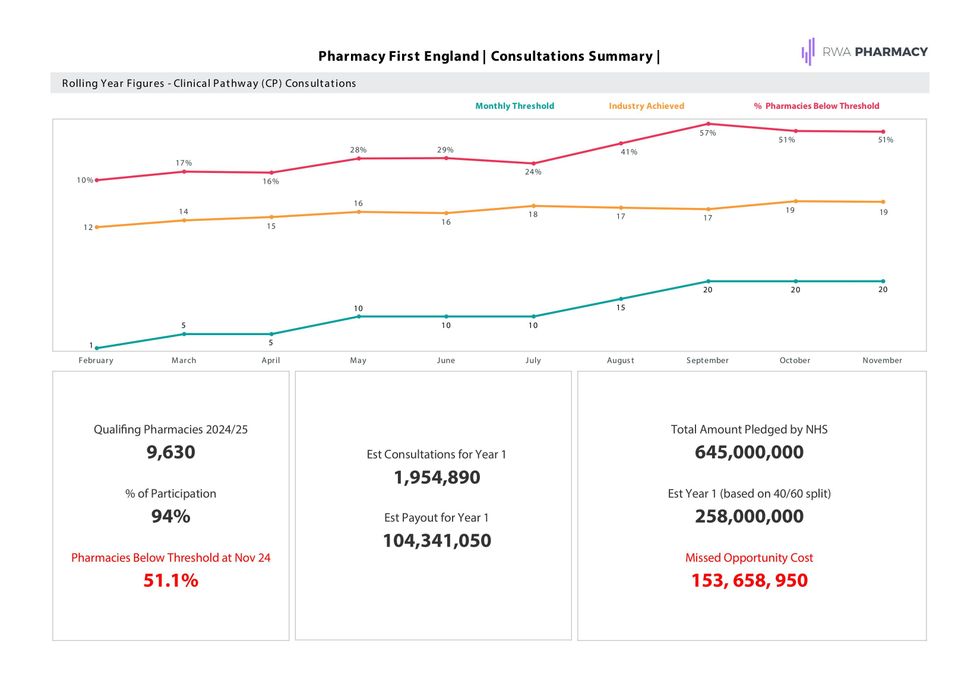The Autumn statement from the Chancellor was brutal for employers to say the least. The employer's National Insurance Contributions (NIC) is estimated to cost businesses c£25bn per annum from April 2025 onwards.
We cover the main points here:
Employers’ National Insurance
Employer National Insurance (NI) is a form of taxation in the UK that businesses must pay on behalf of their employees. In the Autumn statement, significant increases to NI contributions were announced by the government, impacting businesses of all sizes. From April 2025 the Employers’ National Insurance rate will rise from 13.8% to 15%. Furthermore, the threshold for contributions will be reduced from £9,100 to £5,000, essentially meaning employers will be required to pay NI at a rate of 15.0% for employees earning over £5,000 from April 2025. An increase in this contribution means that pharmacy owners will potentially face higher operational costs, which could impact payroll planning. For many community pharmacists who operate small businesses, each percentage point increase in National Insurance can affect their ability to hire additional staff or maintain wage levels.
To put this into context, if an employee’s gross salary is currently £35,000, the employer will experience an increase of £926 in employer NI costs for that employee. Consequently, the total cost of employing someone with a salary of £35,000 will rise to £39,500 next tax year (2025/26), compared to £38,574 in the current tax year (2024/25).
Employment Allowance
The Employment Allowance is a government scheme in the UK that provides financial relief to businesses by reducing their National Insurance contributions (NICs). It was also announced that the employment allowance is to increase by £5,500 from the current amount of £5,000 to £10,500 from April 2025.
For instance, an independent pharmacy with 5 employees and staffing costs of £100k per annum will see no increase in their employer NI next year (2025/26). With a calculation totalling £3,730 of additional employer NI to pay, this amount will be fully covered by the £5,500 increase in the employment allowance.
However, a medium pharmacy group owner with 25 employees and staffing costs of £500k per annum will see an increase in their employer NI next year (2025/26). With a calculation totalling £18,645 of additional employer NI to pay, this amount will only be partially covered by the £5,500 increase in the employment allowance. The impact would be more substantial for a large pharmacy group.
Pharmacists with multiple businesses must understand the implications of associated companies. If two or more companies share common ownership or directors, they may be classified as associated and could collectively be subject to limits on the total eligibility of employment allowance. Therefore, only one company will be able to claim the employment allowance and the companies must decide amongst themselves which company will claim it.
National Minimum Wage
The national minimum wage is the minimum legal hourly rate that employers must pay their workers. From April 2025, the national living wage (NLW) and the national minimum wage (NMW) will increase as outlined in the table below.
Wage band | Rate from 1 April 2024 | Rate from 1 April 2025 |
Age 21 or over (National Living Wage) | £11.44 | £12.21 |
Age 18 to 20 | £8.60 | £10 |
Under 18 | £6.40 | £7.55 |
Apprentice | £6.40 | £7.55 |
The national minimum wage increase has implications for pharmacies as they need to adjust their payroll and expenses to comply with the new wage requirements. This rise affects not only direct payroll costs but also has a ripple effect on overall wage structures. With the minimum wages rise, many pharmacies might feel pressured to raise wages for other roles to maintain equity among employees.
Pharmacists must prepare for the impact of these wage increases on staffing budgets. A review of payroll systems could help identify areas where adjustments are necessary. Importantly, engaging employees in discussions about their career paths and reflective performance management can foster a supportive environment, potentially increasing retention rates even in a challenging financial landscape.
Statutory Payments
There has also been changes to statutory payments, from April 2025 the weekly rate of statutory maternity, adoption, paternity, shared parental and parental bereavement leave pay will increase from £184.03 to £187.18 or 90% of the employee’s average weekly earnings if this is less than the statutory rate. The weekly rate for statutory sick pay will also increase from £116.75 to £118.75.
As a pharmacist, it is essential to stay informed and be prepared to adapt to the changes arising from increased employer National Insurance, shifts in Employment Allowance, and rises in the national minimum wage. By proactively planning and adjusting your pharmacy's operations while fostering a supportive atmosphere for your staff, you can navigate these financial challenges effectively. Emphasising adaptation and collaboration will not only enhance your pharmacy's sustainability but also contribute towards continued high-quality patient care.

This article is based on current legislation and practice and is for guidance only. Specific professional advice should be taken before acting on matters mentioned here. Shivam Modi FCCA, is a Chartered Certified Accountant and Senior Accountant at Silver Levene LLP. He can be contacted on 020 7383 3200 or shivam.modi@silverlevene.co.uk.
















 Harry McQuillan
Harry McQuillan

 Wes Streeting outlines ambitious NHS reform plansPic credit: Getty images
Wes Streeting outlines ambitious NHS reform plansPic credit: Getty images Pharmacies played a critical role during the pandemicPic credit: Hollie Adams/Getty Images
Pharmacies played a critical role during the pandemicPic credit: Hollie Adams/Getty Images


